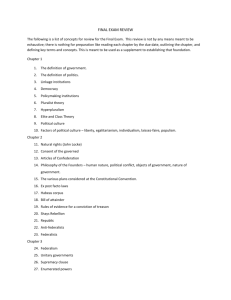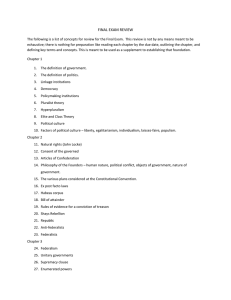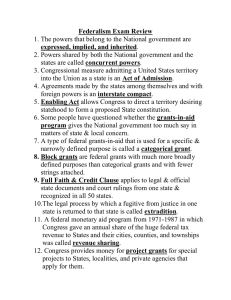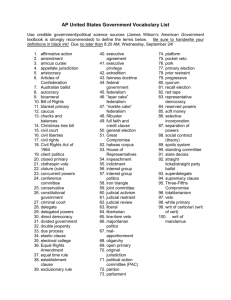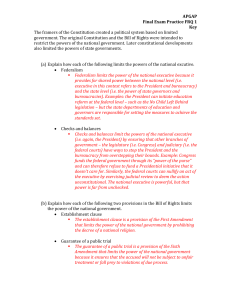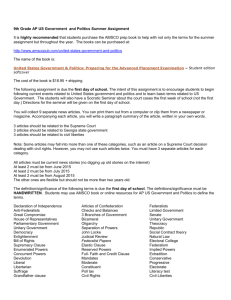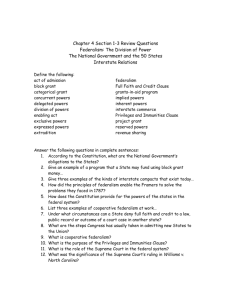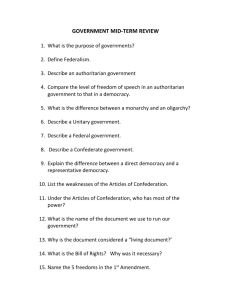American Government Chapter 5, 6 Review Sheet Supreme Court's
advertisement
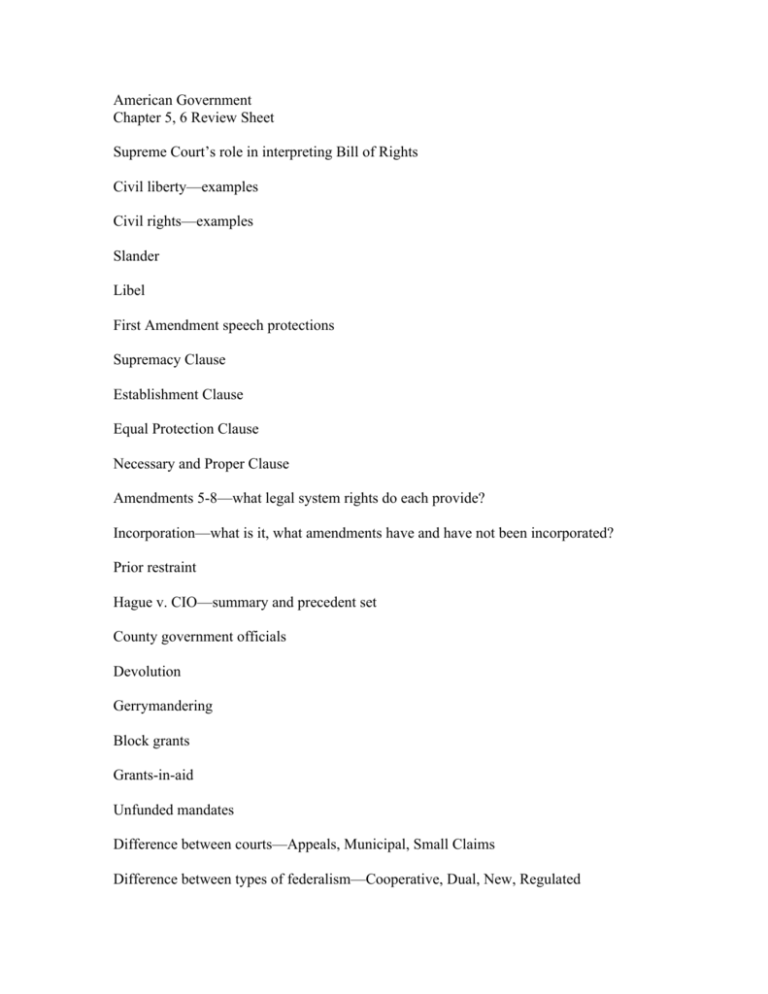
American Government Chapter 5, 6 Review Sheet Supreme Court’s role in interpreting Bill of Rights Civil liberty—examples Civil rights—examples Slander Libel First Amendment speech protections Supremacy Clause Establishment Clause Equal Protection Clause Necessary and Proper Clause Amendments 5-8—what legal system rights do each provide? Incorporation—what is it, what amendments have and have not been incorporated? Prior restraint Hague v. CIO—summary and precedent set County government officials Devolution Gerrymandering Block grants Grants-in-aid Unfunded mandates Difference between courts—Appeals, Municipal, Small Claims Difference between types of federalism—Cooperative, Dual, New, Regulated Ways to amend state constitutions Difference between types of city government—Council-manager, Elected commission, weak mayor-council, strong mayor-council Double jeopardy Probable cause Secular Symbolic speech Obscenity Apportionment Quorum Redistricting Expressed powers, Reserved powers, Concurrent powers Short Answer Chapter 5—Review the role of the Supreme Court in hearing cases involving individual rights. Chapter 6—Review the ways in which power flows through the federal system. Know the difference and examples of reserved, expressed and concurrent powers. Review the 4 benefits of federalism.

